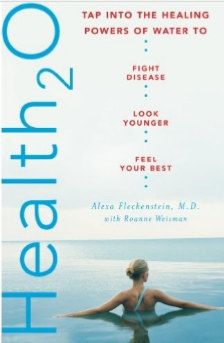As the horror of April 15th recedes from the national news, we in Boston are still in shock from the senseless results of evil. It seems as if everyone in this city and surrounding areas is joined in a caring network of personal connections and we are all feeling a kind of Post-Traumatic Stress Disorder (PTSD), similar to warfighters back from combat.
However, as my co-author Barbara Kivowitz and I learned in researching and writing our new book,In Sickness As In Health: Helping Couples Cope With the Complexities of Illness, trauma after violent catastrophe is a perfectly rational response to an irrational situation that will take months, if not years, to comprehend.
In the wake of Boston, one positive step we can take now is to use this time of national healing to finally remove the concept of “disorder” from the conversation about Post-Traumatic Stress. It is not a disorder to experience stress as the result of violence. Rather, it is an expected, normal response of all living beings. We should react to violence in our midst by coming together to dispel chaos, fear and confusion by thoughtfully creating order in our community once again.
The families directly changed by the bombs in Boston remind us of the military service members and their partners whom we wrote about in our book. Like others, we did use the word “disorder” when writing about the warfighters’ experiences, in deference to their diagnoses and opinions of the treating clinicians whom we interviewed. The accumulated effects of months or years of combat exact very real health tolls that include depression, chronic pain, sleep problems, volatile emotions, and the risk of suicide, creating long-term challenges for both the wounded and their families.
And as observers of the Boston experience, we now see important parallels between wounded warriors and civilians. As a result, we think the idea of “Disorder” should be permanently removed from the diagnosis, treatment and discussion of Post-Traumatic Stress. Calling it a disorder does not help anyone heal, and puts an unfair stigma on a group of people who should be helped not judged.
The Boston victims also brought to light the important differences between military personnel and civilians: Soldiers prepare for combat with body armor. They are alert to danger, with muscles tensed, and ready to fight. In the sunshine of Boylston Street, the brutally unexpected explosions and shrapnel tore into people’s bodies as they were relaxed and cheering. Even those who were not in the vicinity of the bombs were vulnerable to the shock of that day, physically as well as emotionally.
Even with such differences acknowledged, the brave military couples we interviewed—along with the trauma experts who cared for them—have valuable lessons to share for civilian couples and families in the aftermath of sudden, serious injury. Among their insights were these suggestions of how to begin to restore order:
• Allow yourselves to experience and share your feelings with each other, even if they are painful.
• Talk about what brought you as a couple together in the first place, what bonds you together as a family, and what you admire in one another.
• After you talk, sit together in silence. The air clears and anxiety is subdued. In that stillness, love and strength persist and can affirm your bonds.
• When the injured person comes home, set aside time to engage in any familiar family activities that are still possible and that bring you together.
• Be balanced about providing emotional support. One person has the injury, but others may be afraid, angry, and sad, and in need of clarity and compassion. Just as airlines instruct us to put on our own oxygen masks before helping children, couples must create order in their own lives and relationship to provide a solid healing environment for the family.
Make no mistake: those who face down trauma are the definition of brave. So, as our fellow citizens embark on their uncharted journeys to healing we think it is time to remove the stigma of “disorder” from our vocabularies. Let us recognize them for the intrepid life explorers that they are. In the words of Anne Frank, “Where there’s hope, there’s life. It fills us with fresh courage and makes us strong again.”
We as a nation need to stand up and declare that there is nothing disorderly about that.





I really enjoyed this post.Nice blog thanks for sharing keep it up.
LikeLike
Nice blog i liked it.
LikeLike
I am very happy to read your post and am waiting for your upcoming post.
LikeLike
nice post
LikeLike
awesome post very helpful for people who suffering from stress.
LikeLike
I quite liked this blog all the great themes
LikeLike
Really great and informative site, on a separate note, getting emotional support from family members is really important from my point of view.
LikeLike